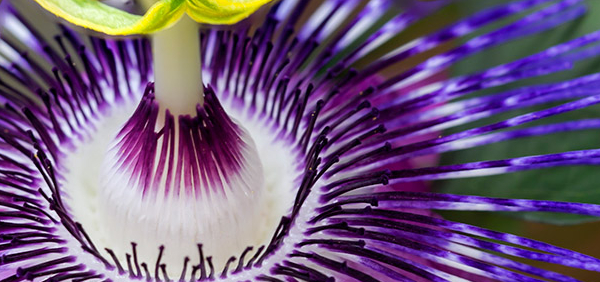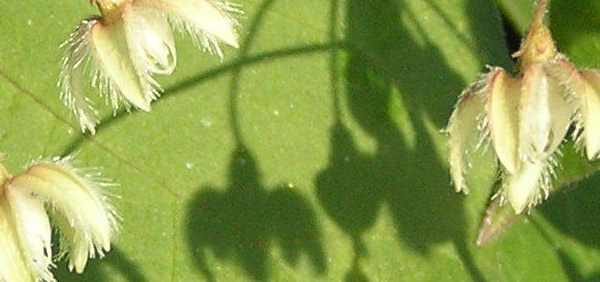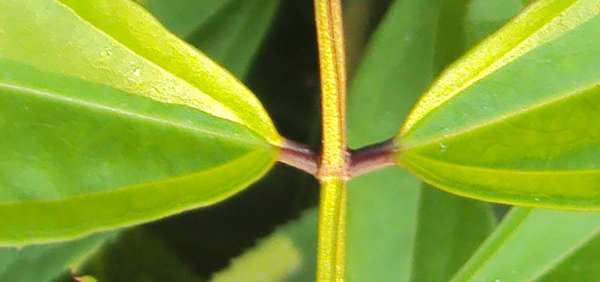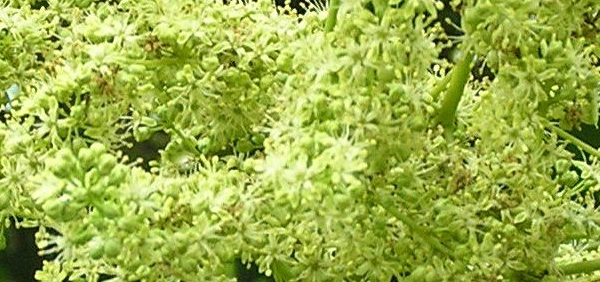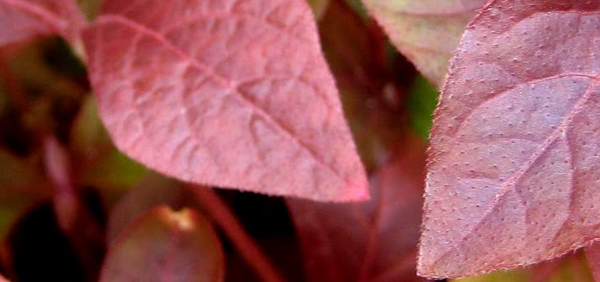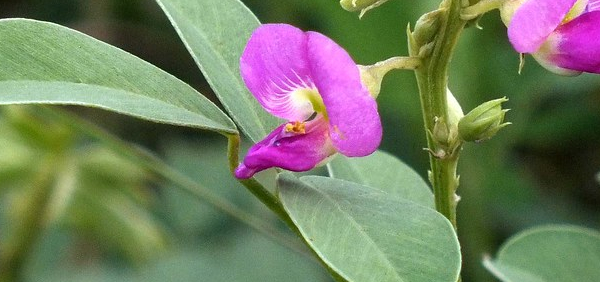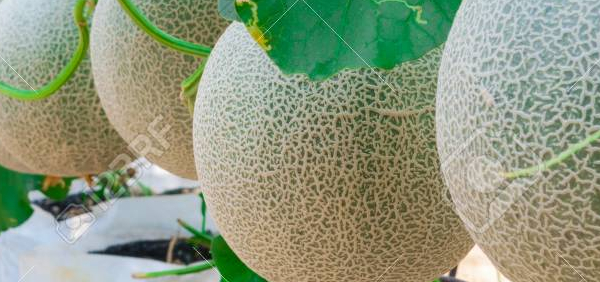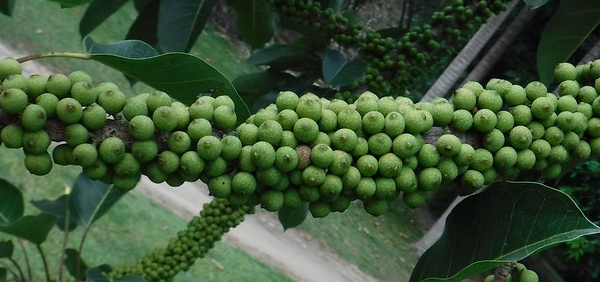kumbhika :

Morphology:
Pistia stratiotes is a floating plant, drift, without rod, formed of a leaf rosette, 5 to 25 cm in diameter and short runner giving rise to daughter plants. A large network of fibrous roots dangling underwater. The leaves in dense rosette, sessile, broadly spatulate, fleshy, composed of a floating airy fabric. Both sides are hairy, greyish or yellowish green. Flowers are numerous, small and hidden at the base of the leaves, surrounded by a small room pale green or white leafy 7 mm long. The fruits are small elongated bays 6 to 10 mm long, containing several dark seeds.
First Leaves
First leaves rounded or obovate, only stalked, plated at the water surface of 1 to 2 mm in diameter. Black seed remains attached to the seedling some time.
Habit
Floating aquatic plant, drifting without stem, spathulate leaves form a dense rosette of 3-15 cm in height and 5-25 cm in diameter, quickly bentgrass.
Underground System
Many fibrous roots fibrous, pendulous, measuring up to 50 cm long, with multiple perpendicular rootlets.
Stem
The rod is reduced to indistinct tillering plate at the base of the leaves. Presence of lateral runners extending from the base sheet, cylindrical 1 to 5 mm in diameter, depending on the size of the mother plant at the end of which thrive girls plants. These stolons appear at the stage 3-4 leaves of young plants from germination.
Leaf
Leaves simple, alternate, sessile, spongy, dense spiral rosette. The limbus is spatulate, obovate with a rounded top and a truncated wedge base from 6 to 12 cm long and 3-6 cm wide, with 5-7 sub-parallel veins especially salient to the underside. The upper surface is green and downy while the underside is paler and tomentum denser.
Inflorescence
Inflorescence small, hidden by leaves, carried by a very short stalk, about 4 mm long. It is formed of a whitish spathe long from 5 to 25 mm, persistent, smooth inside and outside tomenteuse forming two cavities.
Flower
The flower is formed of a whitish spathe long from 5 to 25 mm, persistent, smooth inside and outside tomenteuse forming two cavities. Inside there is a very reduced spadix, attached to the base of the husk on the one female flower in the lower cavity, without perianth and 2-8 apical male flowers in the upper cavity, inserted on a whorl axis underpinned by a shallow cup. The male flowers are reduced by 2 welded stamens. The female flowers are solitary, reduced to a unilocular ovary ovoid, inserted through the axis of the spadix, a lodge with several sessile ovules. The style is short, slightly curved towards the axis, topped with a globular stigma.
Fruit
The fruit is an ellipsoid bay 6 to 10 mm long and 3-6 mm wide, thin-walled, containing 4 to 12 seeds.
Seed
Ovoid or oblong seed, about 2 mm long and 1 mm wide at the truncated apex and depressed disk-shaped. Integument rough, dark brown.
Histology:
Leaf –TS passing through the proximal part of leaf shows it to be isobilateral and flattened; ventral surface slightly ridged, while the dorsal side is fully convex; epidermal cells thin walled squarish or polygonal; cuticle absent: epidermis bearing abundant multicellular hair varying widely in length from proximal to distal end of leaf but generally about 200 to 400 µ long and 29 to 36 µ wide, uniseriate with a characteristic bulbous base, which assumes a saucer like form in dried samples; terminal cell of hair when present drawn out or conical but more often incomplete and broken off; hair more abundant on the ventral side; stomata absent, mesophyll lacunate with some cells having spindle shaped raphides and star like druses of calcium oxalate crystals; occasionally some sub epidermal cells have brown pigments in them; circular groups of undifferentiated vascular tracts and mechanical tissues generally present in vertical rows of three; xylem and phloem cells poorly developed; leaf thinner towards the distal end; transection of the distal end shows ridges at regular intervals corresponding with main veins on both the surfaces; those on the lower surface more prominent; strands of mechanical tissue associated with the ridges, one occupying the centre of the upper ridge while another in the lower ridge; upper ridge become inconspicuous towards the distal tip of the leaf; in the lamina portion, 3 to 4 layers of subepidermal, thin walled cells are compactly arranged below the upper epidermis and have abundant and prominent chloroplasts; parenchymatous ground tissue towards the lower epidermis lacunate; druses and spindle shaped groups of raphides present in this region also.
Stolon – The stolon is characterized by a ground tissue supporting longitudinal strands of undifferentiated mechanical elements and lacunae centrally; the outer 4 or 5 layers below the epidermis are without lacunae.
- » Classification and names of kumbhika
- » Synonyms and definitions of kumbhika
- » Drug Properties of kumbhika
- » Chemical Constituents of kumbhika
- » Standardization of kumbhika
- » Parts used and Dosage of kumbhika
- » Morphology and Histology of kumbhika
- » Distribution and Conservation of kumbhika
- » Cultivation of kumbhika
- » kumbhika in the market
- » Medicinal Uses of kumbhika
- » Researches and clinical trails of kumbhika
- » kumbhika in other sytems of medicine
- » Ayurvedic formulations with kumbhika
- » Images of kumbhika




